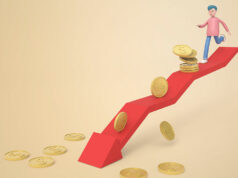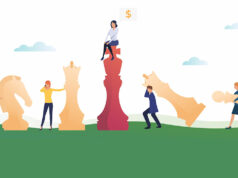By Tony Samson
IN THE 2008 financial crisis on subprime loans, and collateralized debt obligations (CDO) which allowed bad loans to be acquired by a further chain of investors as assets in their portfolios, the domino effect of defaults closed down many banks and bankrupted investment funds. The survivors (given hefty bailout funds from governments) were required to undertake “stress tests” to determine their chances of survival with their exposure to risky assets.
The lessons from that time of a financial pandemic (that one, coming from the USA) can serve as preparation for what everybody is calling the “new normal.” Not that there was ever an old normal, as norms keep changing every day. Just think of the effect of the digital revolution on changing mores where you can send messages to unwilling recipients without any filters — she is not available at this time. Still, the face mask as part of office attire for non-robbers is admittedly something new.
As part of good governance and compliance, banks routinely undergo stress tests. Just to put this in context, the last stress test before this involved the impact of the Taal Volcano eruption (remember that one in January?). What if there is an even bigger eruption, where the whole lake goes up in flames and ashes affecting a radius to include Metro Manila? The banks evaluated their exposure to borrowers from Cavite and Batangas, the impact on tourism and the property market in Tagaytay, the agricultural fallout on coffee production and beef. How many branches do the banks have in the “calabar” zone?
I know that stress test seems so trivial now. But not at that time, just four months ago. Will we feel the same sense of shrugging off about this virus by December (yes, this year)? Probably not.
The stress test is a paradigm borrowed from medicine. Part of a general physical check-up on the state of your health requires a stress test. This one involves getting on a treadmill wearing shorts and some attachments on the chest to monitor the heart and pulse rates, and heavy breathing. The speed and inclination angle of the treadmill is increased to check how much stress your body (and mind) can still take. The elderly, as always, are checked every five seconds, with running conversations to check if they are still capable of speech and logic, through heavy breathing. (And did you really invent the Internet, Sir?) The whole procedure tracks the soundness of your health and the absorptive capacity of the face towel you brought.
Ordinary businesses should also be undergoing stress tests. They already know the immediate stress of a closed shop with payroll obligations. Moving forward, they are dealing with scenarios of empty tables for a restaurant or echoing corridors for malls. Even the macroeconomic managers of the economy, like the secretary of finance, are looking at a “best case”scenario of zero GDP growth up to minus 1%. Okay, that’s one input.
Scenarios are based on guesses, usually assumptions on how the future will look like. They are not necessarily whimsical musings but using existing numbers projected to the rest of the year and beyond. How quickly will consumers eat out again and buy cosmetics, this time without panic? What’s their disposable income going to look like? Will the infrastructure “Build, Build, Build” program, already delayed, be resumed at the budgeted levels, given the emergency spending? Will there be a vaccine in the next few months?
All scenarios at this time tend to be gloomy. Working from home has allowed the imagination to roam free, aided by a barrage of death counts, contagion spread, and things you did not think were dangerous, like shoes worn outside and now spreading their stealth missiles while you’re sleeping in another room.
Optimists, and I count myself as one, tend to be brushed off as disconnected and out of the news loop — haven’t you had your daily dose of the prophets of doom? This too shall pass, and most of us will be there to celebrate, until the next crisis.
There is a morning after even after the worst hangover. You may forget where you are or who you were with the night before. But it’s time to wake up, check your slippers, and get back… to the new normal.
Tony Samson is Chairman and CEO, TOUCH xda.



